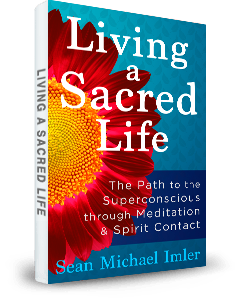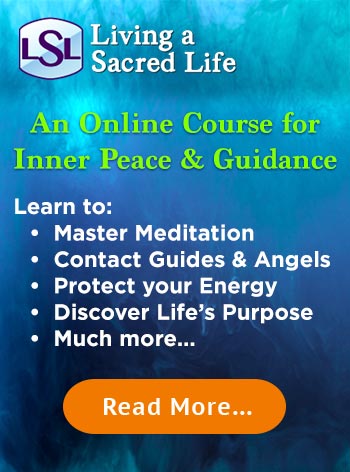As a humble student of life, I’ve come to appreciate Buddhism not just as a religion, but as an immensely practical and insightful philosophy. It offers us a profound perspective on universal wisdom, helping us to unlock a deeper understanding of reality. Buddhism doesn’t shy away from the harsh truths of existence; instead, it arms us with the tools to navigate through the inevitable suffering that life often presents. The end goal? Liberation. A release from the cycle of birth and death, a journey towards enlightenment.
Contents
The Four Noble Truths: Understanding Life’s Suffering
Let us delve into Buddhism’s fundamental teachings, the Four Noble Truths, which are essentially the Buddha’s solemn declaration of the human condition and the way to transcend it. These truths make up the essence of Buddhism, and understanding them is crucial to understanding this ancient religion.
The First Truth
The Truth of Suffering (Dukkha), insists that life, in its most essential form, is riddled with disappointments and suffering. This suffering is not merely confined to physical pain and distress, but it also includes emotional and psychological unrest (such as fear, frustration, and dissatisfaction).
The Second Truth
The Truth of the Cause of Suffering (Samudāya), points in the direction of desire and attachment as the root causes of life’s suffering. The Buddha taught that this suffering stems from our perpetual pursuit of the impermanent and our insatiable thirst for worldly pleasures and desires. Yet, these pleasures are transient, and clinging to them results in suffering.
“All that we are is the result of what we have thought. It is founded on our thoughts. It is made up of our thoughts.”
~The Buddha
The Third Truth
The Truth of the End of Suffering (Nirodha), we find hope. The Buddha assures us that it is indeed possible to end our suffering. This cessation of suffering is attainable through the complete relinquishment of desire and attachment, which leads to a state of liberation known as Nirvana.
The Fourth Truth
The Truth of the Path to the End of Suffering (Magga), is a guide on how to achieve the end of suffering. This is essentially the Noble Eightfold Path, comprising right understanding, right thought, right speech, right action, right livelihood, right effort, right mindfulness, and right concentration. Following this path leads to liberation and the ultimate end of suffering.
- The first truth: The Truth of Suffering (Dukkha)
- The second truth: The Truth of the Cause of Suffering (Samudāya)
- The third truth: The Truth of the End of Suffering (Nirodha)
- The fourth truth: The Truth of the Path to the End of Suffering (Magga)
The Eightfold Path: A Guide to Achieving Enlightenment
As we delve into the profound world of Buddhism, the Eightfold Path (also known as the “Middle Way”) emerges as a foundational component. This core teaching, a guide to achieving enlightenment, comprises a series of practices designed to liberate individuals from suffering and facilitate the attainment of Nirvana, the state of perfect peace and understanding.
The Eightfold Path is essentially an ethical roadmap, a practical guide offering comprehensive directives for moral thought, speech, and action, alongside wisdom and mindfulness practices. It is based on the principle of moderation, and emphasizes the importance of understanding and applying the teachings rather than blind faith or worship.
The Eight Components of the Path
- Right Understanding: This involves understanding the Four Noble Truths (the truth of suffering, the origin of suffering, the cessation of suffering, and the path leading to the cessation of suffering). It establishes the intellectual framework for the Eightfold Path.
- Right Thought: The second element emphasizes the cultivation of goodwill, kindness, and compassion towards all beings, and renunciation of harmful desires.
- Right Speech: This principle emphasizes speaking truthfully, kindly, and productively, refraining from harmful speech such as lies, slander, and gossip.
- Right Action: This practice encourages beneficial and ethical behavior, including following the Five Precepts (refrain from killing, stealing, sexual misconduct, lying, and intoxication).
- Right Livelihood: This principle advises one to earn a living in a way that does not harm others and is in line with the other principles of the Eightfold Path.
- Right Effort: The sixth step involves striving to maintain wholesome states of mind and eliminate unwholesome states, essentially cultivating positive mental health and resilience.
- Right Mindfulness: This involves maintaining awareness of our bodies, feelings, mental states, and phenomena, essentially being present in every moment.
- Right Concentration: The final step is the development of mental focus and discipline through practices such as meditation.
It’s crucial to note that the Eightfold Path is not a linear progression but rather an interconnected web of practices. These principles, when practiced together, lead to a life of wisdom, ethical conduct, and mental discipline, culminating in the ultimate goal of enlightenment. The path requires both understanding and application, as it’s not enough to merely understand these teachings intellectually; they must be lived and experienced.
“No one saves us but ourselves. No one can and no one may. We ourselves must walk the path.”
~The Buddha
Karma: The Consequence of One’s Actions
When we speak of Buddhism, we often find ourselves in the realm of karma, a concept deeply ingrained in all Buddhist traditions. In this context, karma is perceived as the spiritual principle of cause and effect, dictating that our actions, both good and bad, have inevitable consequences (often not immediate, but in future lives). This belief forms the basis of moral responsibility and ethical conduct in Buddhism, encouraging followers to act mindfully and responsibly.
At the core of karma is the fundamental doctrine of dependent origination (Paticcasamuppāda in Pali), which posits that all phenomena, both physical and mental, arise dependent on conditions and cease when these conditions are no longer present. This implies that our present circumstances are the result of past actions (karma) and our future circumstances can be influenced by our current actions.
The workings of karma are often complex and nuanced, due to the myriad of factors influencing the outcomes. According to Buddhism, every intentional action plants a seed in the mind, which will eventually bear fruit when the conditions are ripe. This process doesn’t involve any divine judgement or intervention, but is a natural law similar to the law of gravity.
In the words of the Buddha, “All beings are the owners of their karma. Whichever way they act, they will follow them like a shadow that never leaves”
Understanding The Three Types of Karma
There are three types of karma in Buddhist philosophy: Sanchita karma (accumulated actions), Kriyamana karma (current actions), and Prarabdha karma (fruit-bearing actions). Each type serves to elucidate the intricate dynamics of human life as seen through the lens of karma.
- Sanchita karma refers to all the karmic seeds we have accumulated over countless lifetimes. This vast store of karma is waiting in the wings, ready to come to fruition when the conditions are right.
- Kriyamana karma encompasses our current actions in this very moment. These actions, conscious or unconscious, create new karmic seeds that, in turn, contribute to our Sanchita karma.
- Prarabdha karma is the portion of our Sanchita karma that is ripe and ready to bear fruit in our present life. It manifests as the circumstances we encounter and the challenges we face.
While we cannot change our Sanchita and Prarabdha karma, we can influence our future through our current actions (Kriyamana karma). By making wise and compassionate choices, we can create positive karma that will ultimately lead to favorable conditions and experiences.
The Law of Karma: Karmic Consequences
It is important to note that the law of karma is not a system of punishment or reward, but a tool for understanding the interplay between our actions and their consequences. While the results of karma may manifest in this current life, they often ripen in future lives, underscoring the Buddhist belief in reincarnation or rebirth.
As the Buddha taught, karma is not predestination. The potential for change always exists. And the path to liberation from the karmic cycle lies in leading an ethical life, practicing meditation and developing wisdom. In the grand scheme of things, karma offers profound insights into the importance of ethical conduct and personal responsibility, shaping the core tenets of Buddhist teachings and philosophy.
Nirvana: The Ultimate Goal of Buddhism
Nirvana, an essential concept in Buddhism, represents the ultimate spiritual goal. It is an enlightened state of being that transcends the cyclic existence of life, death, and rebirth (samsara). In this state, one is free from all forms of suffering (dukkha), and hence, it is often described as the ultimate state of happiness and peace.
While the term Nirvana is frequently used in Buddhism, its understanding varies across different Buddhist traditions. In the Theravada tradition, nirvana is seen as the cessation of ignorance (avijja) and craving (tanha), leading to the end of rebirth. In contrast, in the Mahayana tradition, nirvana is more about attaining Buddha-nature and being in service to all sentient beings. Despite these differences, the core idea remains the same: Nirvana is the ultimate end of suffering and the attainment of supreme enlightenment.
Nevertheless, it’s important to underline that the journey to Nirvana is not merely about intellectual understanding of these teachings. Rather, it involves experiential understanding through meditation and mindfulness practices, ethical conduct, and the cultivation of wisdom (prajna).
Nirvana is not a place, but a state of mind. It’s the cessation of suffering and delusions, the end of samsara, and the ultimate realization of the truth about reality.
While Nirvana is a complex and profound concept, it serves as the ultimate spiritual goal for Buddhists around the world. It’s an enlightened state of being where one transcends the cycle of birth and death, and is free from all forms of suffering. The path to Nirvana demands dedication, practice, and deep comprehension of the fundamental teachings of Buddhism.
Dharma: The Teachings of the Buddha
When we delve into the treasure trove of Buddha’s teachings, we often bump into the term “Dharma.” It is a complex and multi-faceted concept in Buddhism, and not as straightforward as it might initially appear. The Dharma, in essence, refers to the teachings of Buddha and the path to liberation and enlightenment that he laid out for his followers.
The Dharma, as a guiding light in the darkness of ignorance, serves multiple roles – it is a moral compass, a roadmap to nirvana, and a mirror reflecting the universal truth of reality. While the Dharma can be a gateway to profound philosophical insights, it is, at its core, practical and directly applicable to our everyday life. It is not a distant, esoteric concept but a tangible guide to lead a life of mindfulness, compassion, and wisdom.
Understanding the Dharma demands a deep dive into the core teachings of Buddha, namely The Four Noble Truths and The Eightfold Path.
“Just as a candle cannot burn without fire, men cannot live without a spiritual life.”
~Buddha
Meditation: A Way to Connect with Inner Peace
As an advocate of Buddhism, I’ve found that meditation forms the backbone of our spiritual journey. It’s a way through which we can connect with our inner peace, bringing about a sense of calm that transcends beyond the day-to-day struggles and challenges we might be facing. In Buddhism, meditation isn’t just an activity; it’s a way of life. It’s an invitation to delve deeper into the realms of our mind and explore layers of our consciousness that have long been untouched or uncharted.
The Purpose of Meditation in Buddhism
In Buddhism, meditation isn’t just about relaxation or stress management, although these are undoubtedly significant benefits. Its primary purpose is to cultivate mindfulness and awareness, to develop a deeper understanding of our minds and the nature of our existence. By doing so, we can begin to see the world as it is, devoid of illusions and misconceptions often associated with our conditioned perceptions (a concept known as avidya or ignorance in Buddhism).
Types of Buddhist Meditation
There are many forms of meditation practiced in Buddhism, each serving a unique purpose and offering a different path to inner peace. Here are a few:
- Vipassana Meditation: Also known as insight meditation, Vipassana meditation teaches us to see things as they truly are. It trains the mind to focus on the present moment, promoting a state of calm and mindfulness.
- Samatha Meditation: Translates to calming meditation, it’s a practice of focusing the mind on a single object, such as the breath, to cultivate tranquility and concentration.
- Metta Meditation: Known as loving-kindness meditation, it’s a practice of radiating love, kindness, and goodwill towards oneself and others, fostering a sense of compassion and empathy.
Meditation: An Essential Path to Enlightenment
Meditation is more than a tool for relaxation or stress relief. It is a fundamental path to enlightenment (also known as nirvana), a state of ultimate liberation and freedom from suffering. Through meditation, we can begin to understand the interconnectedness of everything, realizing that our sense of self is not separate from the world around us. This realization, in the Buddhist context, is a pivotal step towards achieving enlightenment.
Meditation in Buddhism is like the mighty river that flows towards the ocean of enlightenment. Without it, the journey is incomplete.
Thus, meditation in Buddhism is a profound practice that connects us with our inner peace, offers insight into the nature of our minds and existence, and paves the way to ultimate liberation. As we delve deeper into it, we learn more about ourselves and the world around us, growing in wisdom and compassion.
Reincarnation: The Belief in Continual Life
In the realm of Buddhism, the concept of reincarnation, also commonly referred to as rebirth, is not only a fundamental principle but forms the very backbone of Buddhist philosophy. It is the belief in the continual cycle of life, death, and rebirth, a cycle called samsara. This cycle, however, is not a linear progression but rather a cyclical one, with each life being shaped by the moral and ethical decisions made in previous lives.
Unlike the concept of reincarnation in many other philosophies, Buddhism does not believe in the transmigration of a fixed self or ‘soul’. Instead, it proposes a more nuanced concept known as anatta, or ‘no-self’. This principle suggests that one’s perceived ‘self’ is actually an illusion, and what we consider as our ‘self’ is merely a collection of five components (skandhas): form, sensation, perception, mental formations, and consciousness.
“Just as a chariot is understood to be a collection of parts (such as wheels, axle, etc.), so too is a ‘person’ understood as a collection of the five skandhas. There is no ‘charioteer’, no ‘self’ which controls our actions.”
~A famed Buddhist analogy explaining anatta
In this context, reincarnation is the continuity of this karmic energy across lifetimes. This idea of continuity — much like the flow of a river, which remains the same river despite its ever-changing water — is central to the Buddhist understanding of the self and reincarnation.
Morality and Ethics
The moral and ethical decisions made during one’s lifetime, as per Buddhism, have a direct impact on the circumstances of their future rebirth(s). This is the law of karma, another integral part of Buddhist philosophy. Actions motivated by greed, hatred, and delusion lead to negative karmic consequences, whereas actions motivated by generosity, compassion, and wisdom lead to positive ones. The consequences of these actions, however, are not immediate and may manifest in the current life or any subsequent life.
Ultimately, the goal of Buddhist practice is to break free from this cycle of rebirth — a state known as nirvana or ‘extinguishment’. This is achieved through the Eightfold Path, a comprehensive path of moral, meditative, and wisdom practices. Reaching nirvana means the cessation of all suffering (dukkha) and the ultimate liberation from the relentless cycle of samsara.
Compassion: The Importance of Loving-Kindness
As we delve into the philosophy of Buddhism, one of the core tenets that we must discuss is compassion, often referred to in Buddhist teachings as loving-kindness (Metta). This concept, so central to the Buddhist understanding of a well-lived life, emphasizes the cultivation of unconditional love and benevolence towards all beings, without any expectation of receiving anything in return.
The importance of Metta cannot be overstated in Buddhism. It is a fundamental aspect of the path to enlightenment (Nirvana), a state of ultimate peace and liberation from suffering (Dukkha). It is through the practice of loving-kindness that Buddhists believe we can attain a state of inner peace, which in turn helps us to navigate the world with a calm and understanding mind.
Compassion and Choice
In Buddhist teachings, compassion is seen not just as an emotional response, but a deliberate, intentional act of the will. It is about consciously choosing to alleviate the suffering of others, to extend kindness and love to them, regardless of whether or not they ‘deserve’ it in our eyes. Here, I believe, is one of the most profound aspects of Buddhism’s philosophy of compassion: It is not about judgment, but about unconditional love and understanding.
“Just as a mother would protect her only child with her life, so let one cultivate a boundless love towards all beings.”
~Buddha
The practice of Metta is often carried out through meditation, during which practitioners visualize sending love and kindness to themselves, their loved ones, neutral persons, difficult persons, and finally, all sentient beings. This practice helps to develop a sense of empathy and connection with others, breaking down the barriers of ‘self’ and ‘other’ that often lead to conflict and misunderstanding.
According to Buddhism, the benefits of practicing Metta are manifold:
- Inner Peace: By fostering a sense of love and compassion for others, we let go of negative emotions such as anger, jealousy, and resentment, which helps cultivate inner peace.
- Improved Relationships: When we practice loving-kindness, we naturally become more understanding and patient, which can greatly improve our relationships with others.
- Positive Karma: In Buddhism, acts of kindness and compassion generate positive karma, which can lead to positive rebirths and ultimately to Nirvana.
Compassion and the Four Noble Truths
Furthermore, the practice of Metta is intertwined with the understanding of the Four Noble Truths, the central teachings of Buddhism. By understanding the universality of suffering (the First Noble Truth), and realizing that the cause of suffering is desire and attachment (the Second Noble Truth), we are naturally moved to compassion. In acting upon this compassion and following the Eightfold Path (the Fourth Noble Truth), we contribute to the cessation of suffering (the Third Noble Truth), both in ourselves and in others.
Compassion, or Metta, is a cornerstone of Buddhist philosophy. It represents a radical shift in perspective, from self-centeredness to a focus on the well-being of all beings. By practicing Metta, we can cultivate a sense of inner peace, improve our relationships, and make a positive impact on the world around us.
What Buddhism Says About Love
As I delve into the profound philosophy of Buddhism, it becomes apparent that love holds a crucial position in its teachings. When we explore the Buddhist perspective on love, we find it to be not only a feeling but a path towards liberation and enlightenment. This love isn’t merely an emotion but an active practice of compassion, kindness, and understanding.
When it comes to love, Buddhism highlights four key aspects, referred to as the “Four Immeasurables” or “Brahmaviharas” (the divine abodes). These are: Metta (loving-kindness), Karuna (compassion), Mudita (sympathetic joy), and Upekkha (equanimity).
- Metta (loving-kindness): To cultivate Metta is to develop a sense of benevolence and goodwill towards all beings, without any discrimination. This form of love is unconditional and asks for nothing in return. It is about wishing happiness for others as we would wish for ourselves.
- Karuna (compassion): In Buddhism, Karuna encourages us to alleviate the suffering of others. This is not a passive sympathy but an active empathy that motivates us to take actions to help those in distress. It’s about understanding the pain of others as our own and striving to ease it.
- Mudita (sympathetic joy): Mudita is about taking delight in the happiness and success of others, without a tinge of envy. It is to rejoice in their joy as if it were our own.
- Upekkha (equanimity): Upekkha teaches us to remain calm and composed amidst the fluctuating tides of life. It promotes a balanced mind that remains undisturbed by praise or blame, success or failure, joy or sorrow.
These Four Immeasurables serve as the foundation for a healthy, harmonious, and fulfilling relationship with oneself and others. They are not just ideals to be admired from afar, but qualities to be embodied and practiced in our everyday lives.
Self Love
Moreover, the Buddhist perspective of love also stresses the importance of self-love. According to Buddhism, one needs to love oneself before one can fully love others. It teaches that self-love is not about narcissism or self-indulgence, but about respecting and taking care of oneself physically, mentally, and spiritually.
Thus, in its essence, what Buddhism says about love is a profound paradox: it is both a destination and a journey, both an emotion and a practice. It is about loving others as we love ourselves, and loving ourselves so we can better love others. It is about finding peace within ourselves and extending that peace to the world around us.
What Buddhism Says About Death
As we delve deeper into the intricate teachings of Buddhism, we inevitably come across its profound insights on the inevitable phenomenon of death. Buddhism views death not as a definitive end but as a pivotal point in the continuum of life and existence. This perspective is firmly grounded in the central Buddhist doctrine of rebirth, a cycle of birth, death, and rebirth, driven by the law of karma.
The Buddha, in his teachings, highlighted the inevitability of death, its uncertainty, and the importance of understanding and preparing for it. He said, “Of all the footprints, that of the elephant is supreme. Similarly, of all mindfulness meditation, that on death is supreme.” (Anguttara Nikaya 5.57) In essence, reflecting on death serves as a potent reminder of life’s impermanence and the need to live wisely.
Just as the footprints of all living, footed creatures fit into the footprint of the elephant, and the elephant’s footprint is declared to be supreme among them with respect to size; so too, all skillful qualities are gathered under mindfulness of death, and mindfulness of death is declared to be supreme among them.
At Death
When it comes to the specific moment of death, Buddhism emphasizes the state of the mind at that critical juncture. The last thought moment (called marana-sanna) is considered especially significant as it is believed to influence the nature of the next rebirth. Therefore, creating a peaceful environment for the dying person, fostering positive thoughts, and encouraging mindfulness are encouraged.
The after-death state (or the “bardo” in Tibetan Buddhism), is viewed as a transitional phase prior to rebirth. The bardo experience is said to be intensely vivid and can lead to liberation if navigated with awareness and understanding. The Tibetan Book of the Dead and The Tibetan Book of Living and Dying serve as essential guides on this.
Finally, Buddhism offers profound advice for those left behind—grieving is natural, but one should not become excessively attached to the grief. Instead, it suggests using death as a reminder of life’s fleeting nature and the urgency to cultivate virtue and wisdom.
The Buddha taught: “Even as a mother protects with her life her child, her only child, so with a boundless heart should one cherish all living beings.”
~(Sutta Nipata 1.8)
Buddhism presents a unique, insightful perspective on death—one that emphasizes understanding, preparation, mindfulness, and compassion. It encourages us to face death with equanimity and wisdom, transforming it from a source of fear into an opportunity for growth and liberation.
For another look at death and the dying process, read “Dying Can Be Beautiful: The Spiritual Connection.”
What Buddhism Says About Sex
In the vast and complex realm of Buddhist teachings, the subject of sex is addressed with a nuanced perspective. It isn’t seen as inherently sinful or detrimental, as in some religious contexts, but rather is considered within the larger framework of ethical conduct and conscious living. How we engage in sexual behavior, much like all other aspects of our lives, can either promote our spiritual growth or hinder it, according to Buddhist philosophy.
The Buddha’s teachings, as detailed in the third precept of the Five Precepts (the basic code of ethics for lay Buddhists), advises refraining from sexual misconduct. However, the term ‘sexual misconduct’ is open to interpretation and largely depends on the context, cultural norms, and individuals involved. It’s important to note that rather than prescribing rigid rules, Buddhism encourages individual responsibility and mindfulness in all actions.
“Refrain from sexual misconduct”
~Third Precept of the Five Precepts
What Is Sexual Misconduct?
In a broader sense, sexual misconduct, as interpreted by most Buddhist scholars and teachers, generally refers to any sexual activity that causes harm. This can include actions such as infidelity, sexual assault, exploitation, or any non-consensual activity. On the other hand, consensual sexual activity, within a committed relationship, where both parties are of legal age, and no harm is inflicted, is typically not considered misconduct. This of course is a modern interpretation where legal age is defined by a social authority, and a committed relationship is an exclusive arrangement which is more traditional. For a look at alternative forms of relationships, read “Unusual Intimate Relationships: One Size Does Not Fit All.”
While the Five Precepts provide guidance for laity, the Vinaya Pitaka (the monastic code) has more stringent rules for monks and nuns, including celibacy. But again, this is not because sex is viewed as inherently evil, but rather as a potential source of attachment that can distract from the path to enlightenment.
It’s fascinating to see how Buddhism’s approach to sex, much like its overall philosophy, is grounded in mindfulness, ethics, and compassion. It places great emphasis on personal responsibility, urging us to be fully aware of the potential consequences of our actions (both for ourselves and others) and to strive for harmlessness in all we do.
Summary on Buddhism and Sex
- Sexual activity is not inherently sinful or detrimental, but it can be if it’s done irresponsibly or harmfully.
- The concept of ‘sexual misconduct’ is interpreted contextually and generally refers to any sexual activity that causes harm.
- Consensual sexual activity, devoid of harm and within a committed relationship, is generally not considered misconduct.
- Monks and nuns follow stricter rules, including celibacy, to avoid attachments that can distract from the path to enlightenment.
- The overarching emphasis is on mindfulness, ethics, and compassion in all actions, including sexual behavior.
What Buddhism Says About Homosexuality
Understanding what Buddhism says about homosexuality requires an exploration of its core teachings, often encapsulated in the concepts of wisdom, ethics, and mindfulness. It is crucial to note that Buddhism, unlike many other religions, does not have a central authority dictating the interpretation of its teachings, leading to a diversity of viewpoints within the tradition. However, the fundamental principles of Buddhism encourage compassion, understanding, and respect for all sentient beings. The Buddha himself did not provide explicit teachings on homosexuality, which allows for a wide range of interpretations.
From the perspective of Buddhist ethics, sexual behavior (gay or straight) is evaluated largely in terms of the Five Precepts, ethical guidelines followed by practicing Buddhists. The third precept admonishes against sexual misconduct, a term that is broadly interpreted within various Buddhist traditions. Sexual behavior, regardless of its orientation, that is non-consensual, harmful, or exploitative is considered misconduct. On the other hand, a loving and respectful relationship, regardless of the partners’ genders, aligns with the Buddhist ethos of kindness and respect for all beings.
In Buddhism, whether or not homosexuality is seen as acceptable depends upon the understanding and interpretation of the teachings associated with ethical conduct.
Interpretation
However, it’s important to note that some cultural and historical contexts within Buddhism have traditionally held more conservative attitudes towards homosexuality. These attitudes, however, are largely cultural constructs rather than inherent Buddhist teachings. For instance, in societies where Buddhism has historically linked monasticism with celibacy, homosexuality might be viewed through a lens of sexual abstinence, rather than a matter of sexual orientation.
The stance of contemporary Buddhist practitioners and scholars on homosexuality is generally one of acceptance and inclusivity. Several prominent figures in modern Buddhism, such as the Dalai Lama and Thich Nhat Hanh, have openly expressed support for the LGBT community, emphasizing that sexual orientation does not prevent anyone from achieving enlightenment.
Ultimately, Buddhism teaches that all beings, regardless of their sexual orientation, have the potential to attain enlightenment and should therefore be treated with respect and dignity. These teachings serve as a powerful reminder of the inherently inclusive nature of Buddhism.
What Buddhism Says About Who Created the World
In the grand tapestry of the world’s religions, the question of who created the world often takes center stage. The narrative of a divine or supernatural entity breathing life into existence is a staple in many faiths, providing a sense of purpose and meaning. Buddhism, however, approaches this question in a radically different, somewhat unconventional manner.
Buddhism does not subscribe to the idea of a creator God or divine being responsible for the existence of the universe (i.e., the world and everything in it). Instead, it posits the concept of dependent origination (Paticca-Samuppada in Pali), a core principle which asserts that everything in the universe arises and persists due to the interplay of certain conditions and processes.
Buddhism fundamentally posits that nothing exists in isolation—everything is interconnected and interdependent, continually influencing each other in a complex web of causality.
This principle of dependent origination rejects the idea of a single, first cause (a creator God, for instance). Rather, it espouses a view of the universe as a dynamic, ever-changing process, with no discernable beginning or end. This perspective challenges our linear, cause-and-effect understanding of the world, nudging us towards a more nuanced, cyclical conception of existence.
The Cycle of Life and Death
Central to the teachings of Buddhism is the cycle of birth, death, and rebirth—known as samsara. The circumstances of each rebirth, according to Buddhist philosophy, are determined by karma—the moral law of cause and effect. Essentially, actions (karma) in this life influence the conditions of the next.
Yet, it is important to note that Buddhism teaches the notion of anatta or no-self, suggesting that there is no enduring, unchanging soul that transmigrates from one life to another. Rather, what continues is a stream of consciousness, conditioned by karma and propelled by desire and ignorance.
This view of existence as an ongoing, self-perpetuating process negates the need for a divine creator. The universe is not a creation, but rather a manifestation of countless interdependent phenomena arising and ceasing in a ceaseless flow.
Buddhism does not provide an answer to the question of who created the world in the traditional sense. Instead, it reframes the question, steering the focus away from a divine creator and towards the profound interconnectedness and interdependence of all phenomena. In the light of dependent origination, the question shifts from ‘who created the world?’ to ‘how does the world arise and cease in each moment?’
What Buddhism Says About Ghosts
When we delve into the subject of what Buddhism says about ghosts, we find an intricate and nuanced understanding of these entities. Rooted in folklore, mythology, and religious teachings, the Buddhist perspective on ghosts is both fascinating and enlightening.
The Buddhist texts, known as the Tripitaka or “Three Baskets,” notably the Jataka Tales (stories about the previous lives of Buddha), often mention ghosts or spirits. However, these entities are not simply phantoms to be feared; they represent a specific state of existence in the Buddhist cosmology.
In Buddhist philosophy, existence is cyclical, comprising of six realms (Samsara): gods (Deva), demigods (Asura), humans, animals, ghosts (Preta), and hell-beings. The ghost realm, in particular, is characterized by intense desire, often related to hunger and thirst, which can never be satisfied. These “hungry ghosts” as they are often translated, are not necessarily evil but are suffering a karmic consequence.
“Just as a shadow follows the body, as we think, so we become.”
~The Buddha
This quote from Buddha encapsulates the core Buddhist teaching of Karma. The life form one is reborn into, be it a human, an animal, or a ghost, depends largely on one’s actions (karma) in previous lives. Thus, one who is reborn as a ghost has probably been reborn as such due to past negative deeds, demonstrating the interconnectivity between morality and the cycle of existence.
Redeemable Ghosts
However, the Buddhist perspective on ghosts is not entirely grim. The tradition also holds that through meritorious actions (charitable deeds, observing precepts, and practicing meditation) in their current existence, these beings can lighten their karmic load, eventually being reborn into a better state. This belief is notably evident in the Ullambana Sutra, where Buddha instructs his disciple Maudgalyayana to make offerings on behalf of his mother, who had been reborn as a hungry ghost.
Moreover, in some Buddhist traditions, special days and rituals are dedicated to the spirits of the dead. During these times, Buddhists make offerings to pacify and deliver the hungry ghosts, again underlining the importance of compassion and charity in this tradition.
To sum up, Buddhism offers a rich and empathetic understanding of ghosts, presenting them not as mere supernatural specters but as sentient beings trapped in a specific state of existence due to past actions. Like all beings in the cyclical existence of Samsara, ghosts too have the capacity to alter their fate through moral action, reflecting Buddhist teachings on karma, impermanence, and the possibility of liberation.
In Conclusion
If you’d like to read how the above Buddhist principles compare to other religions of the world, be sure to read, “Get to Know Buddhism By Simple Comparison.”












